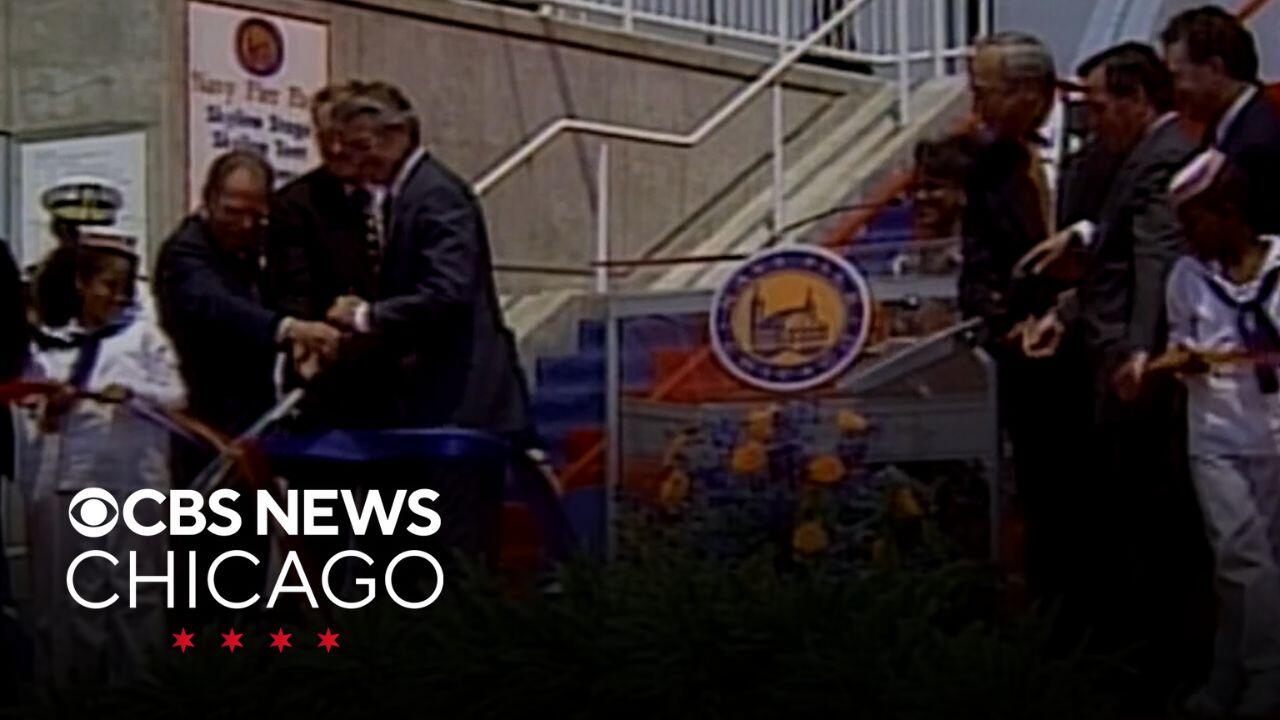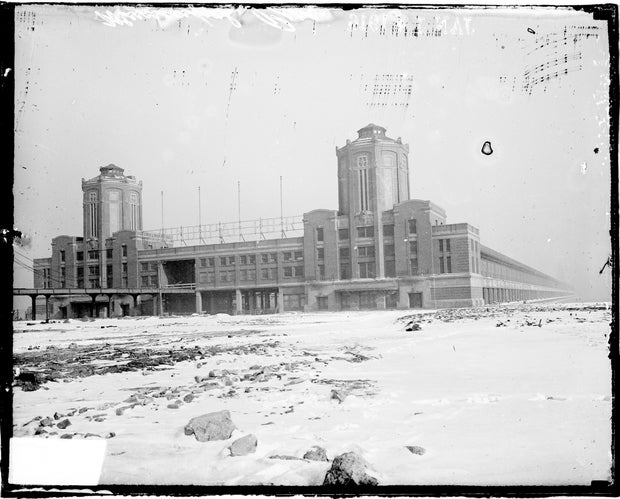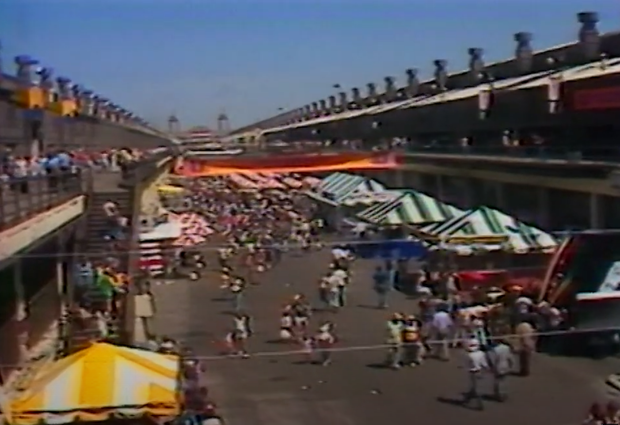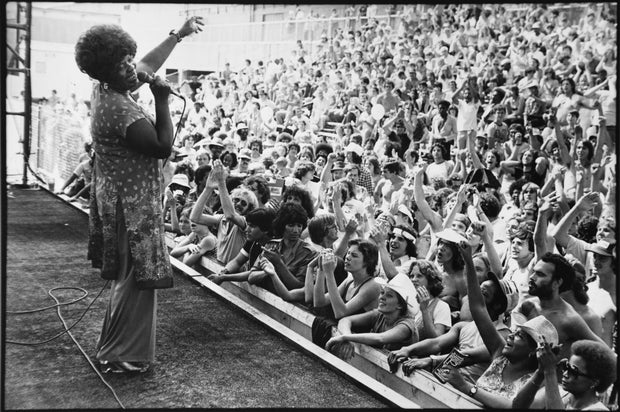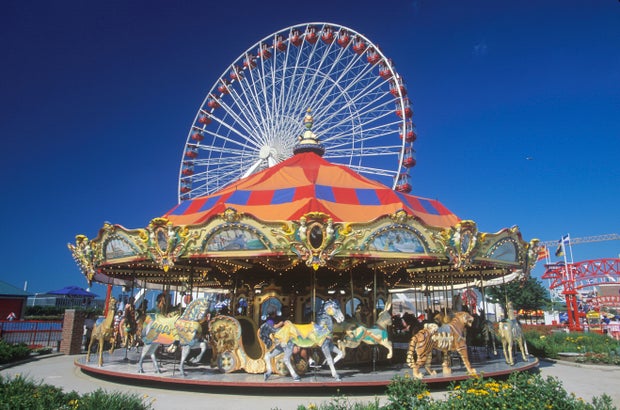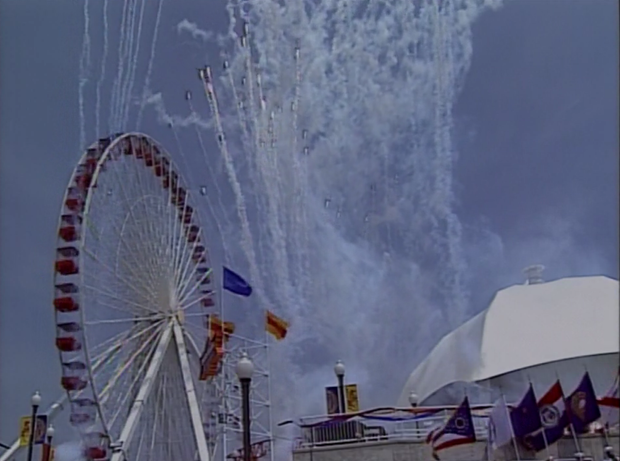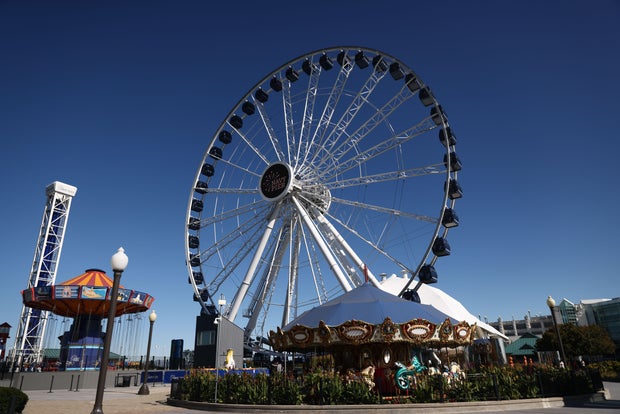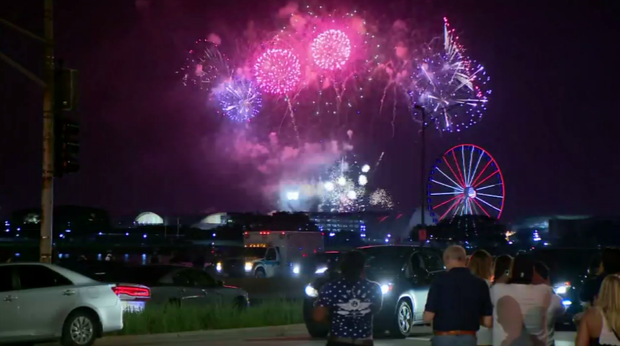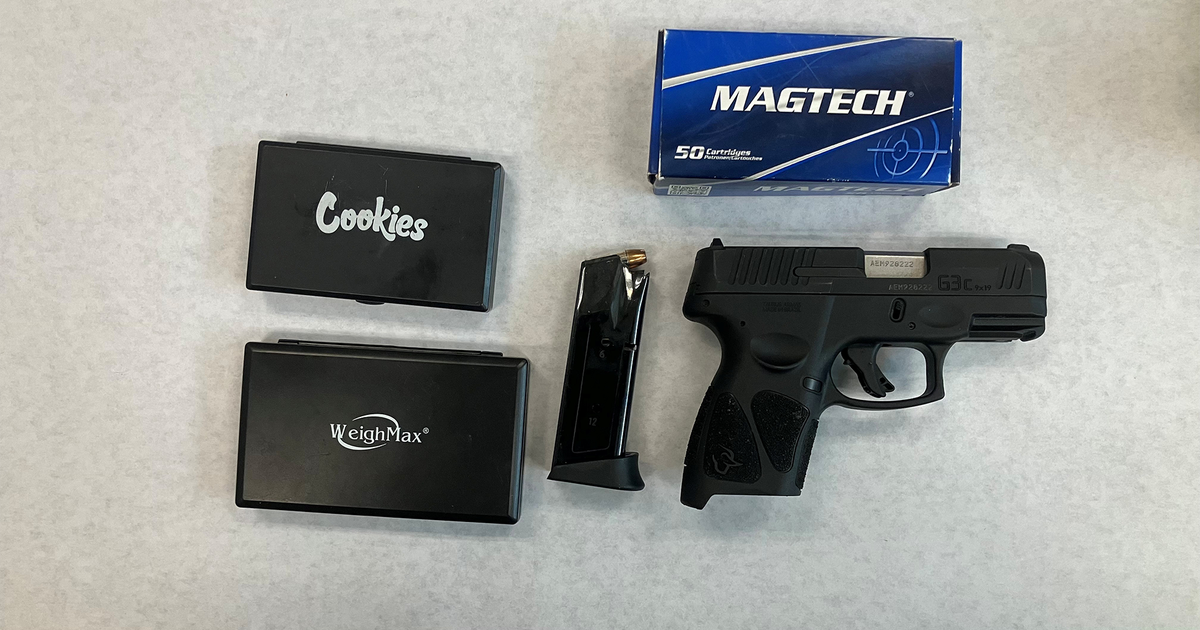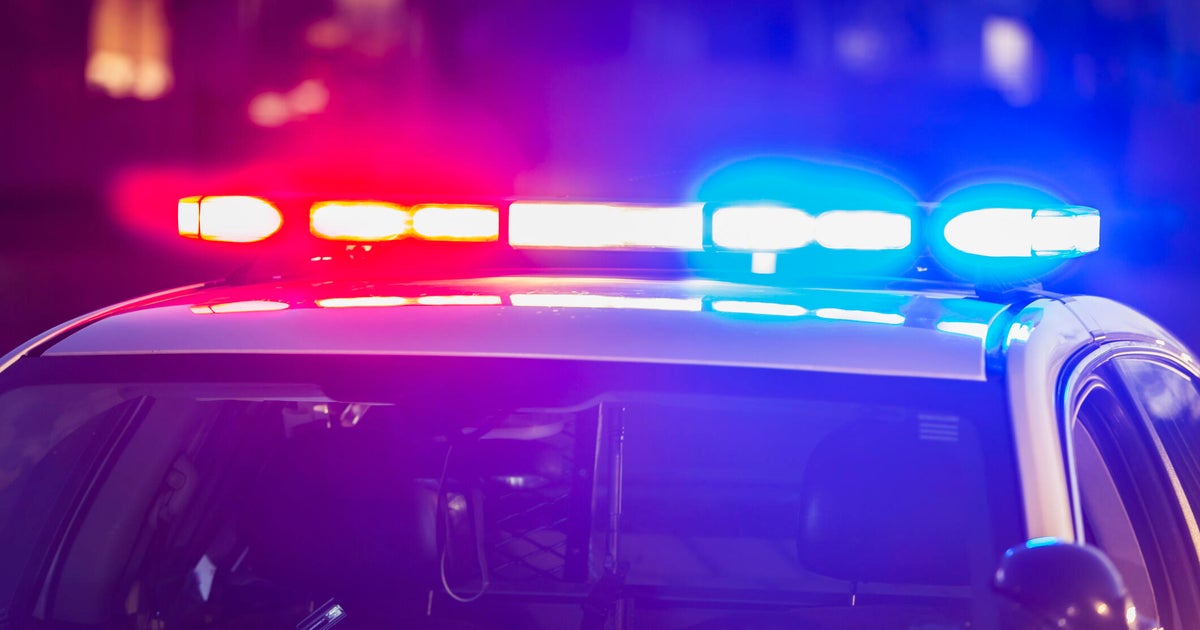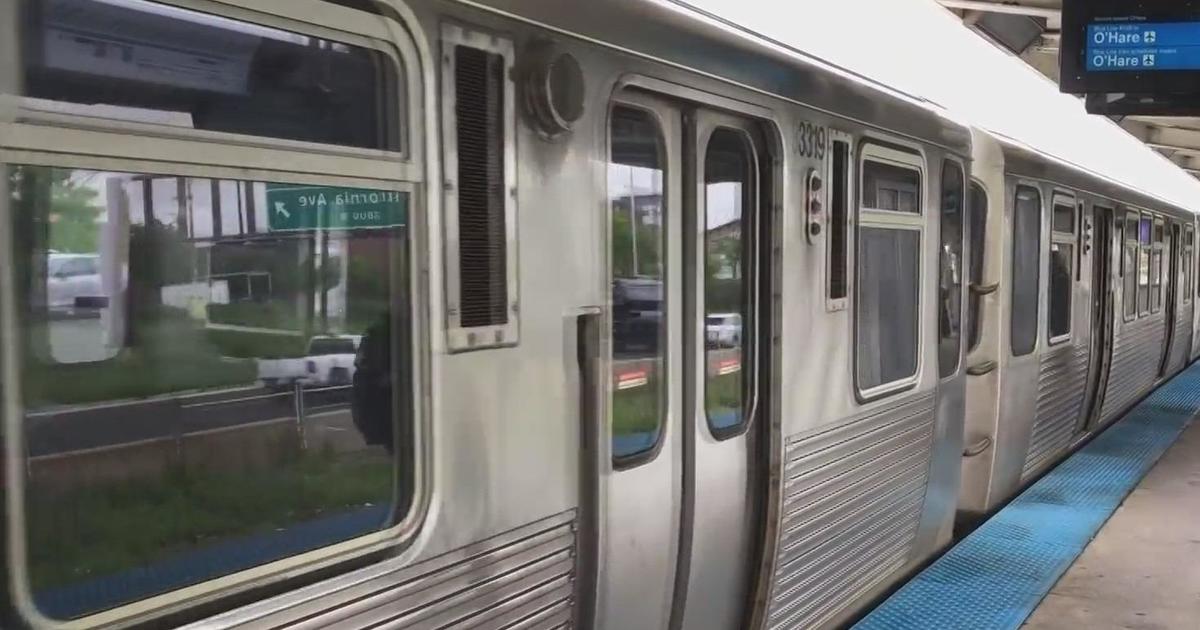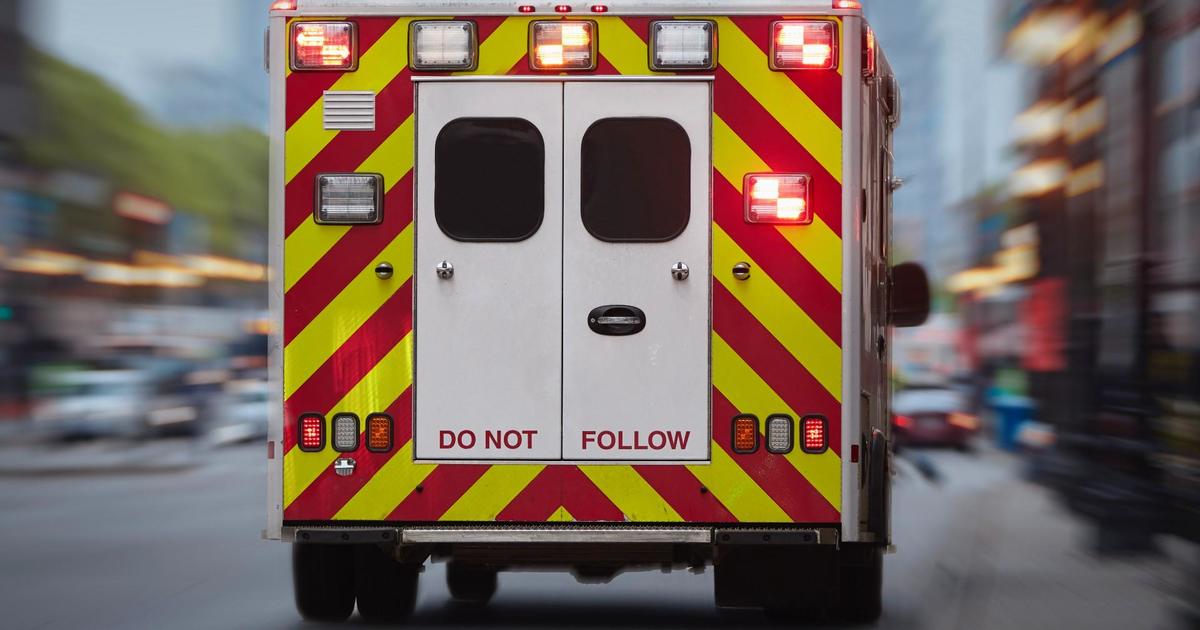30 years ago this weekend: Navy Pier officially reopens as beloved attraction Chicago knows today
Thirty years ago this week, Navy Pier officially reopened as the premier tourist destination that has long been one of Chicago's most beloved and defining features.
Navy Pier, of course, is a lot more than 30 years old. It first opened as Municipal Pier in 1916 — 109 years ago. But before 1995, it wasn't the top local attraction we know today with an array of year-round dining and entertainment options, and there wasn't even a Ferris wheel.
From Navy base to college campus to ChicagoFest grounds
Designed by architect Charles Sumner Frost, Navy Pier was the product of Daniel Burnham's Master Plan of Chicago. The plan in question had called for five piers, but as Chicagology notes, lake shipping never warranted such construction.
Upon completion on June 25, 1916, Municipal Pier was the longest pier in the world at 3,000 feet — extending east out onto Lake Michigan along Grand Avenue, as noted by the Chicago history project Chicagology. The headhouse at the entrance to the pier and the ballroom at the end, Chicagology notes, were connected by two parallel double-decked freight shed buildings that housed warehouse space and ship launches. An open-air space ran between the freight shed buildings.
Municipal Pier officially opened on July 15, 1916.
On the shore end of Municipal Pier, Chicagoans attended carnivals and free lectures by the Chicago Health Department, Chicagology noted. At the far end out in the lake, a concert hall could hold more than 3,000 people.
Among the earliest banner events at Municipal Pier was the Pageant of Progress, which was held in the summers of 1921 and 1922 under Chicago Mayor William Hale Thompson. The event was something of a mini-world's fair showcasing Chicago's premier industries — meatpacking, lumber, steel, garments, and the early motion picture industry, among others.
Municipal Pier was renamed Navy Pier in 1927, in honor of the U.S. Navy personnel who were stationed there during World War I. During that war, the pier housed both a barracks and a prison for draft dodgers, as noted by the Chicago Architecture Center.
The pier hosted trade shows amid the Great Depression, and ferried visitors by boat to the 1933-1934 Century of Progress Exposition, according to writer Theresa L. Goodrich.
During World War II, Navy Pier became a full-scale Naval base, which more than 60,000 servicemembers passed through between 1941 and 1946, according to the architecture center. One of them was future President George H.W. Bush.
In 1946, Navy Pier was transformed once again as a satellite campus of the University of Illinois — spurred by the rush of veterans enrolling in college via the GI Bill, the architecture center noted. The University of Illinois campus — sometimes called "Harvard on the Rocks" or more cheekily, "Champaign on the Rocks" — shared Navy Pier with the Chicago Police Department Traffic Division and military detachments that remained active.
In 1965, the university vacated the pier as the University of Illinois Chicago opened on the Near West Side. Trade shows returned to Navy Pier after the first McCormick Place burned down in 1967 — despite Navy Pier by then being described by Goodrich as "dilapidated, weather beaten, [and] stripped down."
In 1976, in honor of the nation's Bicentennial, the Grand Ballroom at the east end of Navy Pier underwent a major renovation. The following year, Navy Pier was designated a Chicago landmark.
In the late 70s and early 80s, Navy Pier became a premier site for a top Chicago event again — but it still looked nothing like we know it today. Beginning in 1978, Navy Pier played host to ChicagoFest — which Mayor Michael Bilandic created with inspiration from Summerfest in Milwaukee.
Scores of musical acts took to the stages each year at ChicagoFest — rock, blues, R&B, soul, jazz, disco, folk, country, classical, world music, oldies acts whose peak of fame wasn't that far in the past.
Picnic tables were set up with food and beverages. Video games and pinball machines drew crowds at the Pinball Parlor.
Mayor Jane Byrne succeeded Bilandic in 1979, and initially, she wanted to end ChicagoFest, as Dave Hoekstra recalled in an article published by the Abraham Lincoln Presidential Library and Museum. But Mayor Byrne decided to keep the festival going, as a who's who of household-name musical acts performed each day.
A visitor to ChicagoFest on Aug. 5, 1979, could have seen Chuck Berry, Bo Diddley, Chubby Checker of "The Twist" fame, jazz pianist Mose Allison, experimental jazz icon Sun Ra, bluesmen Jimmy Rogers and Sunnyland Slim, bluegrass banjo and fiddle master John Hartford, Chicago folk icon Ed Holstein, and comedy group the Chicago Hysterical Society all in the same day. And that's an incomplete list for the lineup that day.
Also in 1979, as referenced in archive video, Channel 2 even broadcast a day's evening newscasts live from ChicagoFest — bringing anchors Bill Kurtis and Walter Jacobson and weathermen John Coughlin and Harry Volkman before a cheering crowd too. (Complete video of this is unfortunately unavailable.)
In 1980, Hoekstra wrote, 900,000 people attended ChicagoFest — up from 500,000 in 1978.
But this was still Navy Pier with those old freight shed buildings running on either side and open space in the middle. And Hoekstra writes that while the entertainment was a thrill to see, the pier itself was not in good shape at all:
"Navy Pier was a dank, industrial place sticking out in Lake Michigan like a shipwreck. Pigeons and rats were comfortable at the pier, built in 1916 as a dock for freighters. Navy Pier was so creepy it made the idea of seeing ChicagoFest headliners like Frank Sinatra, Etta James and Willie Dixon super exciting. This wasn't the 'my kind of town' that Sinatra sang about."
The last ChicagoFest at Navy Pier was in 1982. The event continued one more year afterward at Soldier Field with Harold Washington as mayor.
Still, events continued at Navy Pier. In the late 1980s and into the early 1990s, the ballroom hosted the summertime concert series and WBEZ folk music show "The Flea Market," a holdover from a weekly Sunday night show that had broadcast live from the Old Town School of Folk Music on Armitage Avenue from 1983 until 1986. During the Navy Pier iteration of "The Flea Market," hosted by the late musician and radio host Stuart Rosenberg, longtime theatre executive Richard Friedman a concert featuring Ladysmith Black Mambazo, Howard Levy, and Iris Dement, in which "[s]o many people flocked to the Pier that it had to be shut down."
But as a whole, Navy Pier was still languishing — until everything changed with a history-making redevelopment.
Developing Navy Pier as we know it today
On Jan. 21, 1992, as recalled by the Chicago Tribune, the Metropolitan Pier and Exposition Authority unveiled plans to turn Navy Pier into a premier tourist destination in a $150 million renovation. The plans showed "a glass-walled indoor park of palm trees, gazebos and fountains, dubbed the Crystal Gardens," and a new home for the Chicago Children's Museum — which had been located since 1989 at the North Pier festival marketplace just blocks inland from the pier.
Those old, rickety shed buildings that had connected the headhouse and the grand ballroom had been torn down in 1991. As the new Navy Pier took shape, the headhouse became the Family Pavilion, anchored by the Children's Museum and an IMAX movie screen.
Just outside the Crystal Gardens, a 146-foot-tall Ferris wheel instantly became a new Chicago icon. Next to the Ferris wheel was a new carousel — not a massive affair with a built-in band organ like the vintage carousels at Central Park or Coney Island in New York, or at one time, Riverview in Chicago — but a smaller and specially built attraction with 36 hand-painted animals.
To the east, new convention space was developed at Festival Hall. And WBEZ public radio moved its broadcast headquarters into a new space at the pier.
The redeveloped Navy Pier opened in stages, with the Skyline Stage outdoor performance space opening in the summer of 1994.
On July 12, 1995, the ribbon was officially cut for the grand opening of the new Navy Pier with brass bands and daylight fireworks. Mayor Richard M. Daley and Gov. Jim Edgar were present.
That evening, Bill Kurtis and Mary Ann Childers anchored Channel 2's 6 p.m. newscast live from Navy Pier. The complete newscast was not available, but video of Kurtis' own ride on the Ferris wheel was — and it can be seen above.
The idea for a Ferris wheel at Navy Pier, of course, was inspired by the very first Ferris wheel — at the World's Columbian Exposition of 1893 along the Midway Plaisance in the present-day area of the University of Chicago campus. The Navy Pier Ferris wheel wasn't quite as big as the World's Fair original, which stood 264 feet high and had 36 bus-sized cars that could fit up to 60 people each. But a ride at Navy Pier was a breathtaking experience nevertheless.
"Almost 102 years after it was originally conceived as the largest Ferris wheel in the world for the Columbian Exposition, here we are again," Kurtis said at the time. "Brand spanking new, 200 feet tall, 40 gondolas, enough for six in a single gondola."
A visitor to Navy Pier in 1995 could find an atmosphere like an old-fashioned street fair, with jugglers and other entertainers performing for enthralled audiences.
More attractions took shape in the ensuing years. The Chicago Shakespeare Theater opened at Navy Pier in 1999. More new shops and restaurants continued to move in. The Wave Swinger ride joined the Ferris wheel and carousel. Those up for a long walk through the pier for many years also found the Smith Museum of Stained Glass Windows.
The old and rickety Navy Pier of the ChicagoFest era quickly became a distant memory as Navy Pier became the top tourist attraction in Chicago and the whole Midwest, with more than 9 million visitors per year.
In more recent years, the transformation has continued. The IMAX and the stained-glass window museum are gone, and the first Ferris wheel was replaced in 2016 with the Centennial Wheel — standing nearly 50 feet taller and allowing for up to 180 more passengers per ride. The first hotel at Navy Pier, Sable at Navy Pier, officially opened in March 2021. A virtual space supplanted the Crystal Gardens the same year.
In March 2020, Navy Pier shut down with the rest of the city and the world due to the COVID pandemic. Outdoor spaces reopened that summer, but after Labor Day, Navy Pier shut down again for several months and remained dormant until the spring of 2021.
But today, Navy Pier is as vibrant and beloved as ever — with a variety of dining and shops, sightseeing and pleasure cruises, performances, rides, and other attractions that now include the Flyover journey.
At the Navy Pier Beer Garden, a summer concert brings a crowd for a variety of bands. On Saturday this weekend, the NuBlu Band — featuring Carlise Guy, the daughter of Buddy Guy, got the crowd dancing. And of course, Navy Pier hosts fireworks every Wednesday and Saturday in the summer.
"It's where fun lives large," Navy Pier says, "whether you're a visitor or local, with family or friends."

